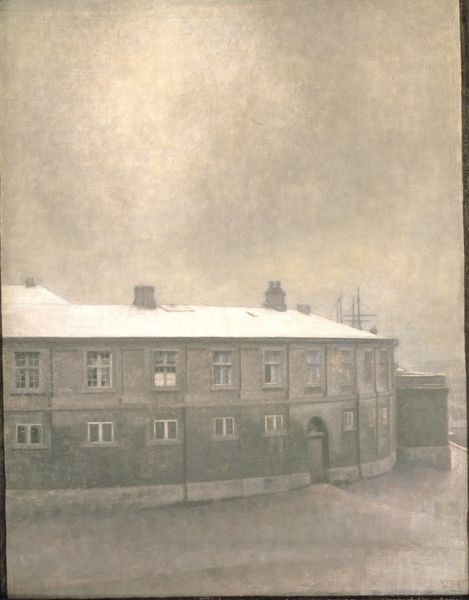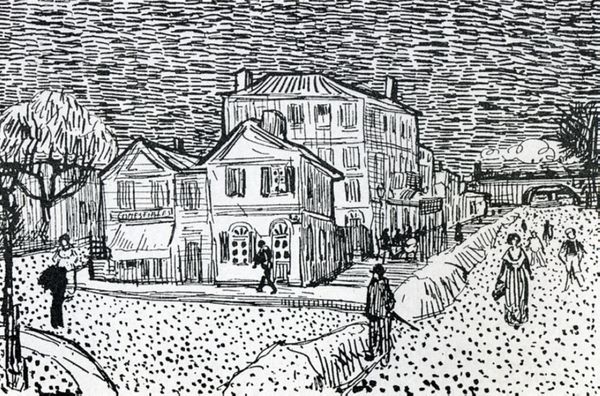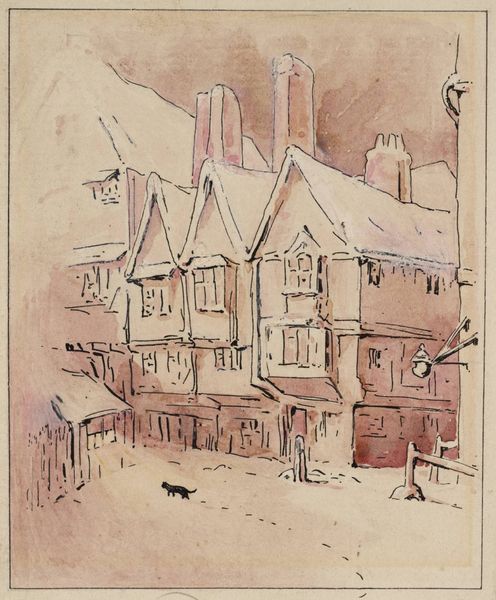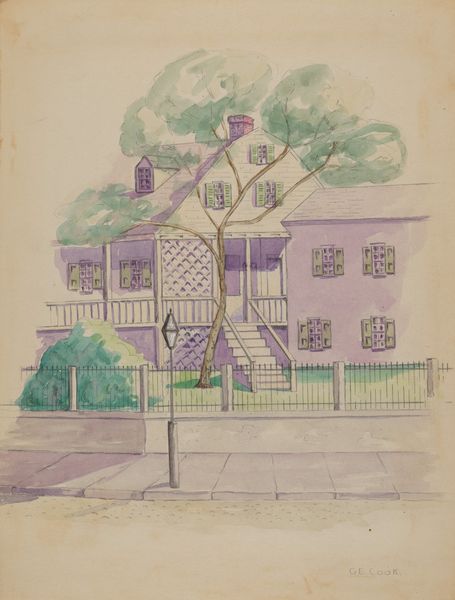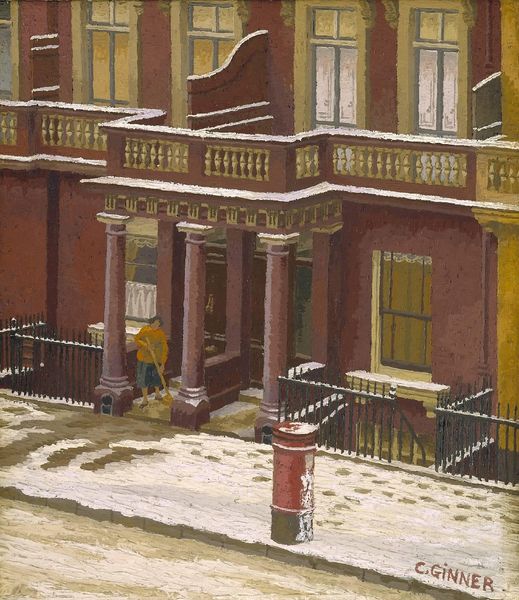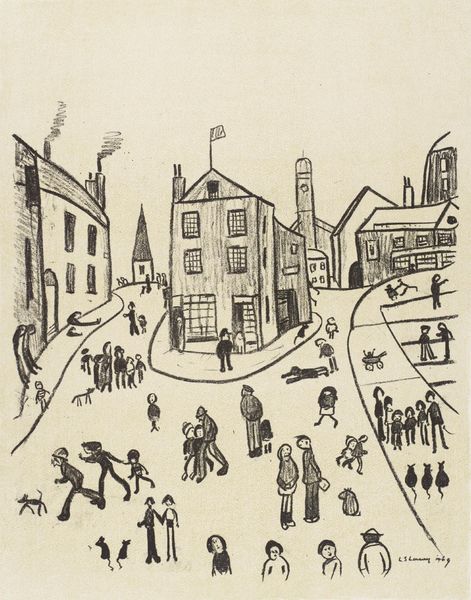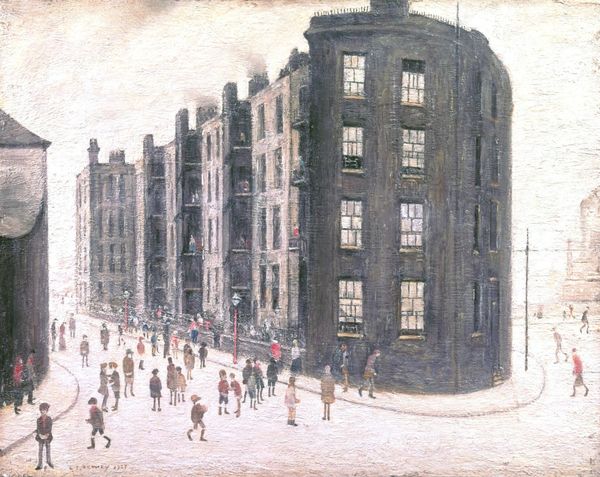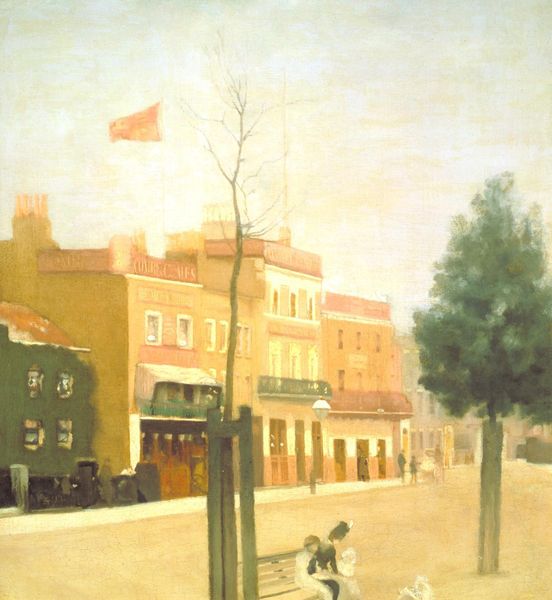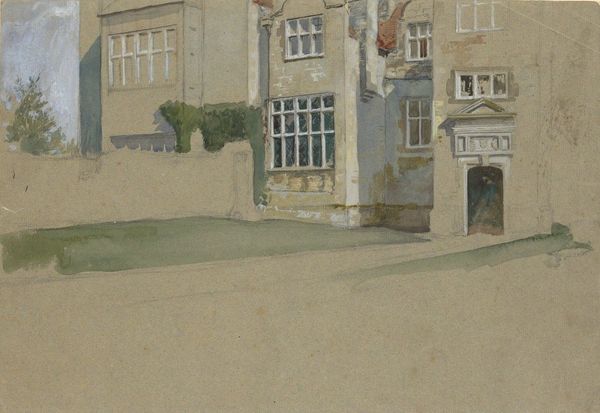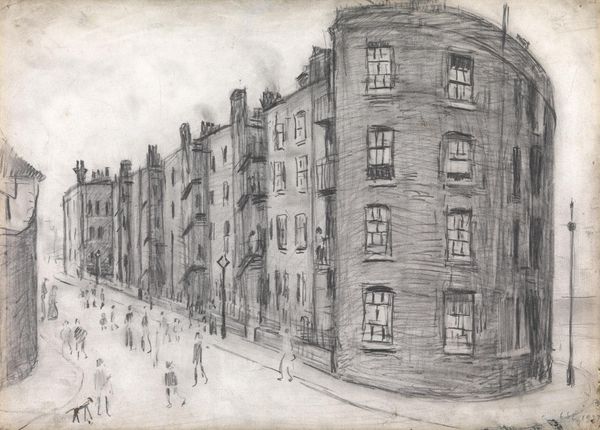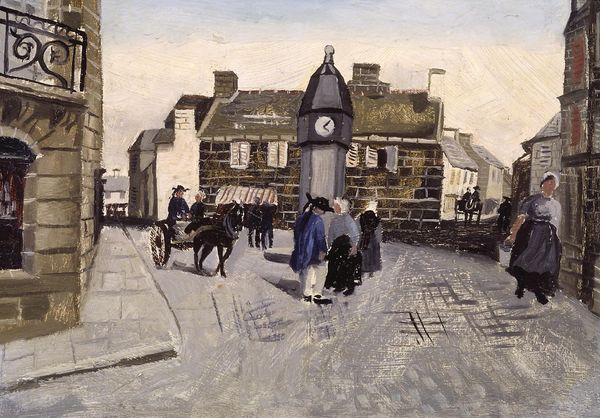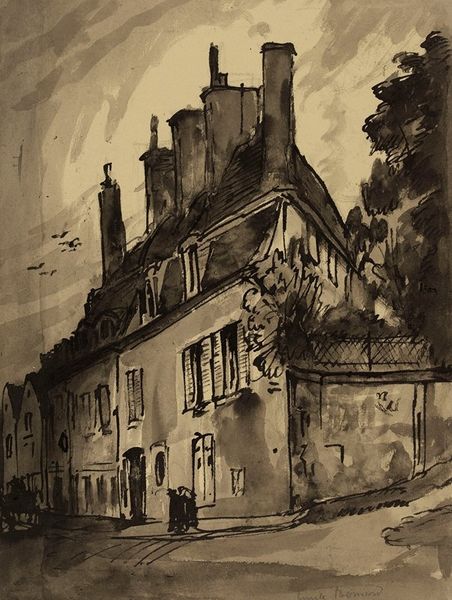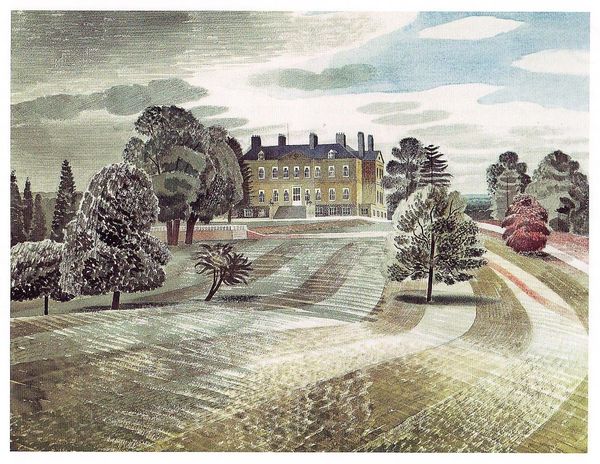
Dimensions: support: 457 x 610 mm frame: 610 x 760 x 110 mm
Copyright: © The estate of L.S. Lowry | CC-BY-NC-ND 4.0 DEED, Photo: Tate
Curator: Standing before us is L.S. Lowry's "The Old House, Grove Street, Salford," part of the Tate Collection, though the exact date of its creation remains unknown. Editor: It has this sort of wistful, melancholy air. Like a stage set for a memory, maybe? Everything feels so still. Curator: Lowry’s Salford was changing rapidly, and he saw these buildings as emblems of a disappearing past, a silent critique of modernization, perhaps. Editor: That one splash of coral in the woman's dress is like a little rebellious act, breaking the somber mood. Like a tiny spark of hope against the grey! Curator: Indeed, his urban landscapes are deeply rooted in the socio-political landscape of industrial England, documenting its impact on daily life and culture. Editor: And you know, looking at it now, I feel a strange sense of intimacy with this place. It feels haunting, but honest. Curator: Lowry preserved a moment in time. An old house and the people who lived near it, becoming something new and permanent.
Comments
tate 7 months ago
⋮
http://www.tate.org.uk/art/artworks/lowry-the-old-house-grove-street-salford-n05992
Join the conversation
Join millions of artists and users on Artera today and experience the ultimate creative platform.
tate 7 months ago
⋮
This picture of 1948 was based on a pencil drawing of 1927 and was made as true to the drawing as possible. A distinctive characteristic of Lowry's work is his use of a white background and the elimination of shadows which gives his pictures a naive and dreamlike quality. He started using pure flake white as a base for his paintings in the 1920s. This was a result of an argument with his teacher Bernard D. Taylor, who thought Lowry's pictures were too dark. Lowry later discovered, to his pleasure, that the flake white turned creamy grey-white over the years. Gallery label, September 2004
